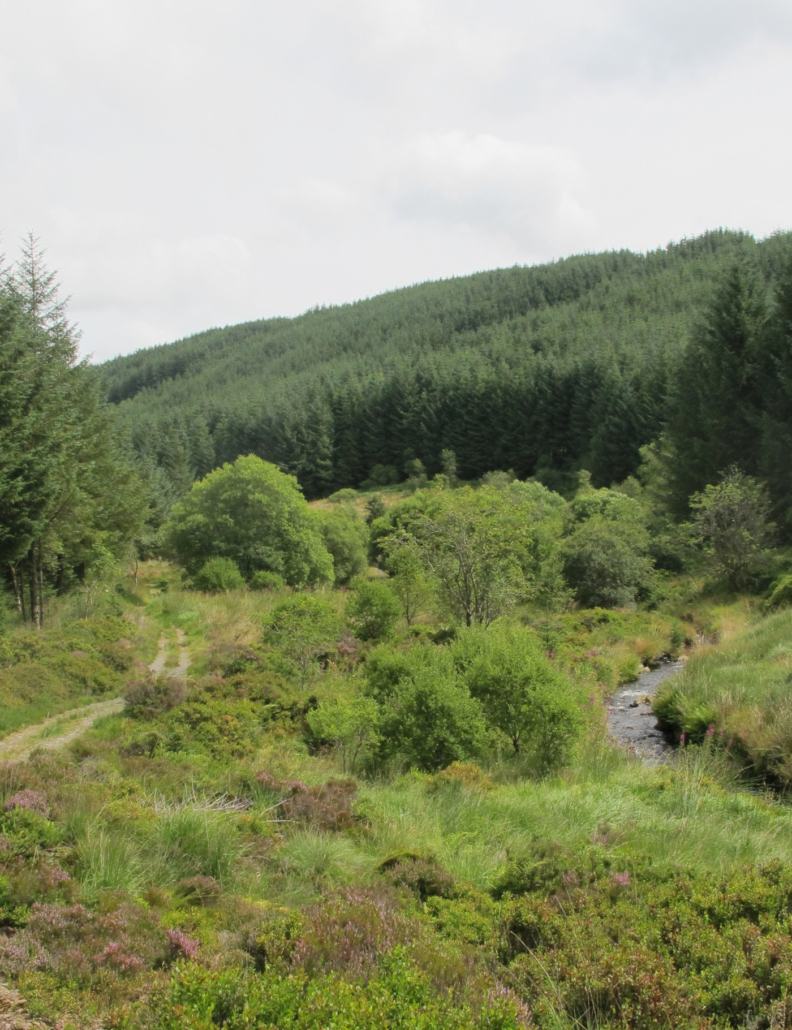
Campaign to protect the Cambrian Mountains in Wales
Originally proposed as a National Park back in 1965, the Cambrian Mountains remains an unprotected landscape. Momentum is building to be designated as an AONB. Lorna Brazell, Secretary of the Cambrian Mountains Society, explains…
The Cambrian Mountains, stretching from the A489 between northern Montgomeryshire all the way south to the northern fringe of Carmarthenshire, form the upland backbone of Wales. Although not strictly high enough to be mountains rivalling those in Snowdonia or the Brecon Beacons National Parks, the region includes spectacular hills and oak-clad valleys alongside a deep cultural heritage of mining and farming communities stretching back to the Bronze Age. Their wide glacial plateau includes 5000 year old peatland areas which help absorb manmade carbon, reduce downstream flooding and mitigate against climate change. The heights offer endless open skies and an increasingly rare sense of immense space and peace, hugely beneficial for mental health, as well as the more intimate beauty of mountain river valleys and the glamour of large reservoirs.
Red kites and peregrine falcons cruise the skies, with 100 species of breeding bird recorded, 35 mammals such as red squirrels, otters and pine martens, numerous butterflies, dragonflies and dung-beetles. On the ground, there are 350 species of lichen, 300 mosses and liverworts, 30 ferns, 450 flowering plants, many rare in Wales and some of international importance.
The writer Edwin Muir, in his Scottish Journey (1935), beautifully evoked the atmosphere of understated landscapes like the Cambrians:
The silence of such places is so complete that it sinks into one’s mind in waves, making it clearer and clearer….In that silence the moor was a living thing spreading its fleece of purple and brown and green to the sun…..There was not one contour, one variation of colour which did not suggest peace and gladness; and the loneliness and silence surrounding the moor were like a double dream enclosing it and making it safe, one might have thought, for ever.
Tragically, little attention is paid to the conservation of these uplands as a region. More and more, farms are bought up for planting as forestry – not increased native woodlands but monoculture conifers with a fig-leaf of deciduous fringe. This raises numerous issues: loss of habitats for all kinds of plants, insects and birds; disturbance of well-established rich peat soils releasing carbon and reducing future fertility and, worst of all, a pretence of carbon-offsetting. “Woods” such as these will capture carbon but then end up being harvested in 30-50 years’ time, with only a small fraction going to long-term uses such as building. The remainder, left as brash, reduced to sawdust or used for short-term products uses such as pallets, will soon return its carbon to the atmosphere.
Separately, repeated proposals are made by developers to build large scale wind farms on the uplands even though the infrastructure for exporting this energy to the towns and businesses which need it is simply not there – not for nothing is the Elenydd, the central portion of the Cambrians, known as the Welsh desert. Consequently, any such developments not only imply high turbine towers and their occasionally turning blades but also large roads and pylons, to let the construction traffic in and the energy out.
Both forms of development risk undermining the spaciousness, peace and even accessibility of the mountain landscape.
Designation as an Area of Outstanding Natural Beauty (AONB) would enable collaboration between stakeholder groups and ensure that the needs of local communities and the public’s need for beauty are taken into account in assessing developments, without adding further bureaucracy since the normal planning regime continues to govern decisions. The existing Welsh AONBs, including the Gower, Llŷn Peninsula and Clwydian Hills and Dee Valley (now under consideration for transforming into a new National Park), are thriving examples of promoting and preserving Welsh landscapes for all.
Action is needed now to protect our precious open hills and the biodiversity they shelter, for future generations. Please support our campaign by signing the online petition asking the Senedd to debate designating the Cambrian Mountains as mid-Wales’ first AONB, before it is too late.
